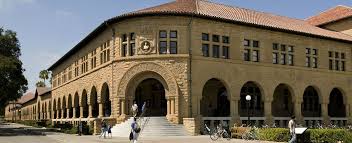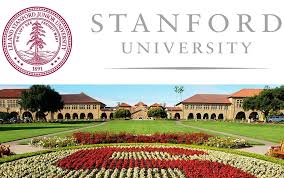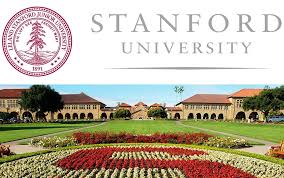
Stanford University,CA-USA
Where is stanford university:
Stanford University is located in Stanford, California, United States. It sits in the heart of Silicon Valley, about 35 miles south of San Francisco and 20 miles north of San Jose. The university’s campus is in the city of Palo Alto, which is part of the San Francisco Bay Area.

Famous for best courses :
tanford University is renowned for a wide range of academic programs, and several of its courses and departments are globally recognized for excellence. Here are some areas in which Stanford is particularly famous:
1. Computer Science and Engineering
- Stanford is a leader in computer science, often regarded as one of the best places in the world to study technology and innovation. Many tech industry leaders and founders, including those of Google, Yahoo, and Instagram, are Stanford alumni. The university’s programs in artificial intelligence (AI), machine learning, data science, and software engineering are particularly strong.

2. Business (Stanford Graduate School of Business)
- Stanford’s MBA program is consistently ranked among the top business schools globally. The school is known for its emphasis on entrepreneurship, innovation, and leadership. It has produced many successful entrepreneurs and leaders in various industries, especially in tech.
3. Law (Stanford Law School)
- Stanford Law School is one of the top law schools in the United States, known for its cutting-edge research, social justice focus, and influential alumni. The school offers a strong interdisciplinary approach, often combining law with technology, business, and policy.
4. Engineering (Especially Electrical Engineering and Bioengineering)
- Stanford’s School of Engineering, particularly in fields like electrical engineering, mechanical engineering, and bioengineering, is world-renowned. The university is a hub for cutting-edge research in robotics, renewable energy, and biomedical technology.

5. Humanities and Social Sciences
- Stanford is also known for its strong programs in the humanities, social sciences, and interdisciplinary studies. The university has a highly regarded department of psychology, political science, economics, and history.
6. Biological Sciences and Medicine
- The Stanford School of Medicine is world-class, with cutting-edge research in genetics, neuroscience, and biomedical engineering. The university is known for its contributions to health and medical technologies, as well as for producing leaders in clinical care and medical research.
7. Environmental Studies and Sustainability
- Stanford offers strong programs in environmental science, climate change, and sustainability. The university is also known for its research and initiatives in clean energy, environmental policy, and sustainable development.

8. Design (Product Design and the d.school)
- The Hasso Plattner Institute of Design (d.school) at Stanford is a global leader in design thinking, a problem-solving methodology that emphasizes empathy, collaboration, and innovation. The program attracts students interested in solving complex, real-world problems using creative approaches.
9. Physics and Space Science
- Stanford’s physics program, especially in areas like particle physics, cosmology, and astrophysics, is highly regarded. The university is affiliated with institutions like the SLAC National Accelerator Laboratory, which is a leader in particle physics research.
10. Education (Stanford Graduate School of Education)
- Known for its innovative approaches to teaching and learning, Stanford’s education program is highly respected, particularly in areas like educational psychology, policy, and leadership. The school also works on issues of equity and access in education.
Stanford’s interdisciplinary approach, cutting-edge research, and strong ties to the tech industry make it one of the most dynamic universities in the world. It has a particularly strong reputation in areas where technology, innovation, and entrepreneurship intersect.

Durability of courses :
The durability of courses at Stanford University, in terms of their relevance, longevity, and the impact they have on students’ careers, can be assessed in several ways:
1. Reputation and Prestige
- Stanford’s academic programs across various fields maintain an outstanding reputation globally. Because of Stanford’s association with innovation, research, and excellence, its courses (whether in computer science, business, medicine, engineering, or humanities) are considered highly durable in terms of their relevance in the job market and their ability to prepare students for leadership roles in their fields.
2. Technology and Innovation Focus
- Many of Stanford’s courses, especially in Computer Science, Engineering, and Business, are constantly updated to stay at the cutting edge of innovation. For example, AI and machine learning courses are highly relevant today, and these fields are expected to continue evolving rapidly. The university ensures that courses are designed with input from industry leaders and real-world trends, which guarantees their longevity.
3. Cross-Disciplinary Learning
- One of Stanford’s core strengths is its emphasis on interdisciplinary education. For instance, students often combine courses from engineering, business, and design thinking (through the d.school) to tackle complex, real-world problems. The cross-pollination of ideas between fields allows for a more durable learning experience, as it prepares graduates to adapt to diverse and changing industries.
4. Research and Development (R&D) Integration
- Stanford is a hub for cutting-edge research in many fields (e.g., biotechnology, energy, artificial intelligence, space exploration), which means its courses often reflect the latest advancements and discoveries. Students engaged in research projects and labs often work on the frontlines of emerging fields, making their knowledge and expertise highly durable and adaptable for future industries.
5. Industry Connections and Entrepreneurship
- Due to its proximity to Silicon Valley, entrepreneurship and startup culture are integrated into many Stanford courses, particularly in business, engineering, and computer science. Many students are encouraged to launch their own startups or work in high-tech industries, where they apply their knowledge in real-time. The durability of these courses comes from their ability to give students not just academic knowledge, but practical, hands-on experience in fast-moving industries.
6. Lifelong Learning and Continuing Education
- Stanford also offers a variety of continuing education programs, including online courses and professional development opportunities. This allows alumni and working professionals to stay connected to the university, update their skills, and continue learning as industries evolve. Some of the most sought-after areas include artificial intelligence, machine learning, data science, and sustainability.
7. Global Impact and Interdisciplinary Solutions
- Courses in areas like global health, environmental sustainability, public policy, and education are designed to equip students with the tools to solve some of the most pressing global challenges. As these issues remain crucial in the 21st century, the knowledge and expertise gained from these courses have long-term durability. Many Stanford graduates become leaders in these areas, driving innovation and change globally.
8. Alumni Network
- Stanford’s extensive and influential alumni network contributes to the durability of the university’s courses. Graduates often become industry leaders, entrepreneurs, researchers, or policymakers, ensuring that the knowledge gained through Stanford’s courses remains relevant and influential. Networking and mentorship opportunities through this network allow alumni to continue learning and advancing their careers throughout their lives.
9. Future-Oriented Focus
- Many of Stanford’s programs are designed to be future-oriented. Courses are regularly updated to anticipate and incorporate emerging trends and technologies. For example, courses in biotechnology, cybersecurity, blockchain, quantum computing, and climate change reflect areas that are expected to remain significant for decades.
10. Flexibility in Course Offerings
- Many programs at Stanford allow students to take elective courses or personalized learning paths based on their interests. This flexibility ensures that students can adapt their learning to new developments or career opportunities, thus keeping their education relevant and sustainable.
The annual course fees at Stanford University can vary depending on the program and the level of study (undergraduate, graduate, professional). Here’s an overview of the typical costs for the 2023–2024 academic year:
1. Undergraduate Tuition Fees
For the 2023–2024 academic year, the tuition for undergraduate students at Stanford is:
- Tuition: $56,169 per year
- Room and Board: Approximately $18,547
- Other Fees: Around $3,000 (which includes student activity fees, health services, and other campus-related costs)
So, the total cost for an undergraduate student (including tuition, room, board, and other fees) is about $77,716 per year.
Note: This is an estimate, and costs can vary depending on the specific housing arrangements and personal expenses.
2. Graduate Tuition Fees
Graduate tuition fees at Stanford vary by program, as different schools and departments set their own tuition rates. Here are some examples for the 2023–2024 academic year:
Graduate School of Business (MBA program)
- Tuition: $82,000 per year
- Other fees (e.g., health services, student fees, etc.): Around $3,000–$5,000 per year
- Living expenses: Estimated around $30,000–$35,000 per year
Stanford School of Law (JD program)
- Tuition: $72,320 per year
- Other fees: Approximately $2,000–$3,000 per year
School of Engineering (MS programs)
- Tuition: Around $58,000 per year
- Other fees: Estimated at around $3,000–$4,000 per year
School of Medicine (MD program)
- Tuition: $70,000 per year (plus fees for health services and other costs)
- Living expenses: Estimated at $24,000–$30,000 per year
Other Graduate Programs
The tuition for most other graduate programs is generally in the range of $50,000 to $70,000 per year, depending on the specific school or department.
3. Professional and Executive Education
Stanford also offers a variety of professional education programs, such as executive education, continuing education, and online courses. These fees can vary significantly depending on the program, duration, and format:
- Executive Programs: Costs for short-term executive education programs can range from a few thousand dollars to over $50,000, depending on the length and focus of the course.
4. Financial Aid
Stanford is known for its generous financial aid policies, especially for undergraduate students. For undergraduate students with demonstrated financial need, Stanford offers a need-blind admissions policy and full financial aid packages, meaning that eligible students from families with low to moderate incomes can attend Stanford without taking on loans. Approximately 70% of undergraduates receive some form of financial assistance, and Stanford’s financial aid packages are designed to cover tuition, room, board, and other living expenses based on the family’s ability to pay.
Graduate students, on the other hand, may receive financial aid in the form of fellowships, teaching assistantships, and research assistantships, though financial aid availability varies by program and department.









Leave a Reply